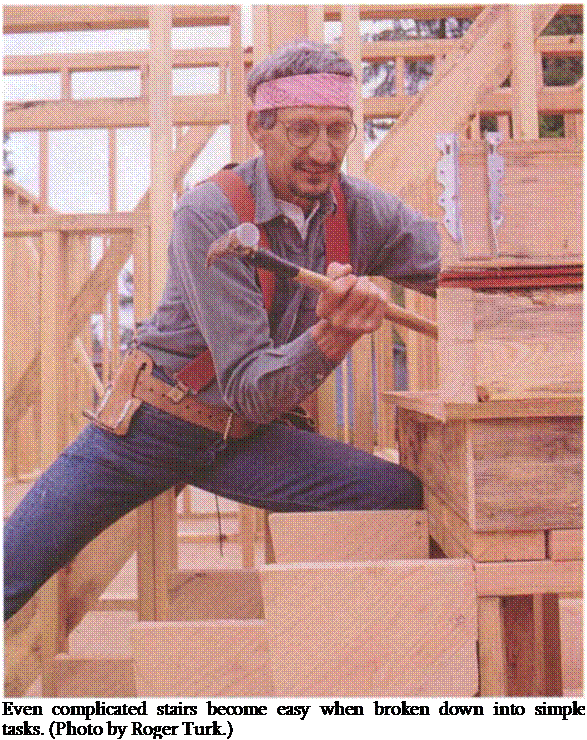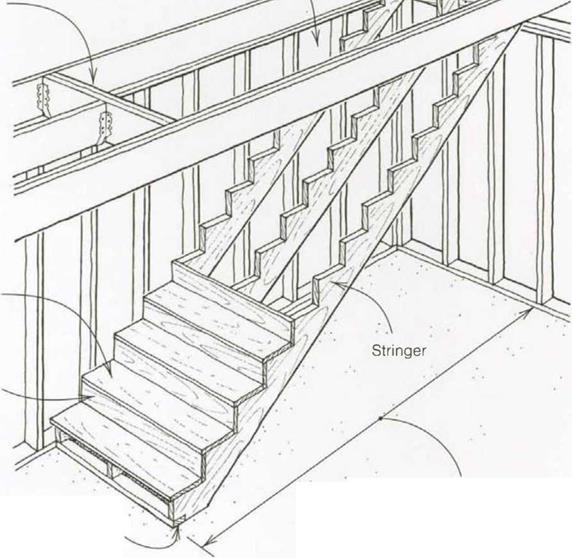STARS

Stairs, like roofs, come in many different styles and shapes. There are straight stairs, L-shaped or U-shaped stairs, winders (stairs that change direction over the course of several steps), and even circular stairs. They can be as basic as treads attached to a couple of stringers or as ornate as a double-helix beauty that spirals upward toward the sky. From the simple to the complex, every stair has the same basic purpose: to get us safely from one level to another.
What’s more, every stair uses the same basic layout principles. So building stairways, like framing roofs, is actually quite easy to understand if you break the job down into simple tasks. In fact, you don’t need many special skills or tools to build most stairs. What you will need to know are the names of stair parts, the codes regulating stairs so that they’re safe for people to use, and a bit of math to calculate the number and size of steps. This knowledge, coupled with the ability to use a framing square to lay out the stair stringers, will allow you to cut and assemble the stair parts into a strong and durable stairway that is safe and comfortable to use. (To learn basic stair vocabulary and codes, see the side – bar on the facing page.)
Stairwell The hole in a floor through which a stair passes on its way from one level to the next.
Headroom The vertical distance from stair treads to ceiling joists. Must be at least 6 ft. 8 in.
Stringers The wooden members that run diagonally and support the treads and risers (also called carriages and horses). Three are required for most 3-ft.-wide stairs.
Riser The vertical part of a step. For safety, keep this figure near 7 in.
Tread The horizontal portion of a step (where you set your foot). Each tread needs to be at least 10 in. wide.
Landing A level place at the top and bottom of stairs (can also be a platform separating stairs).
Total rise The distance a set of stairs travels vertically from one finish floor level to the next.
Total run The total horizontal distance of a set of stairs from first tread to last.
Kicker A 2×4 secured to the floor that helps hold the bottom of the stair stringer in place.
Straight-flight stairs
|
|
|
|
|
|
|
|
|
|
|
|
|
|
|
|







Leave a reply